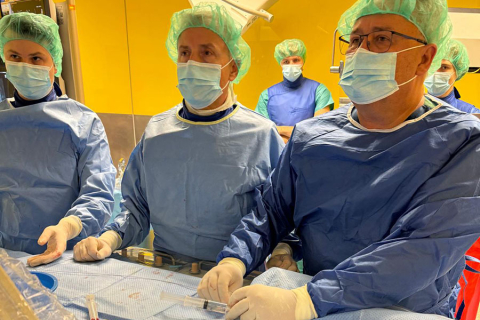Persistent ductus arteriosus is a common congenital defect of the cardiovascular system. In the neonatal period, it can cause respiratory and circulatory failure, and in infants it can cause symptoms of heart failure. In addition, it is a risk factor for infective endocarditis, and an untreated hemodynamically significant ductus can lead to the development of pulmonary hypertension.
The standard treatment for the defect is transcatheter closure of the patent ductus arteriosus (PDA). Interventional treatment uses different types of springs and implants, which are selected according to the size and anatomy of the duct. The new Nit-Occlud PFM coil systems also allow closure of ducts with difficult anatomy.
Patients undergoing treatment
The procedures were performed on four patients aged: 4; 5; 9 and 17 years old, one of whom had been previously treated with cardiac surgery. In this patient, a ruptured arterial duct was diagnosed at age 5. The duct was very wide, wider than the aorta, and resulted in pulmonary hypertension.
- The boy underwent cardiac surgical closure of the duct, leaving a small leak. After the operation, a gradual decrease in pulmonary bed pressure and an increase in the left-right leak through the duct were observed, which made it possible to undertake the next stage of treatment, complete closure of the duct - explains Professor Bożena Werner, Head of the Department of Pediatric Cardiology and General Pediatrics UCC MUW.
All the ducts have been tightly closed, and the treated children are feeling well. On the first day after the procedure, they played with their peers and did not require medication or nursing procedures.
The team performing the procedures
The procedures were carried out on August 26 by a team consisting of:
- Dr Krzysztof Godlewski,
- Prof. Robert Sabiniewicz – proctor,
- Dr Ewa Smereczyńska-Wierzbicka,
- Dr Cezary Niszczota,
- Mateusz Puchalski, MD
- anesthetist Dr Małgorzata Arłukiewicz,
- nurse anesthetist Aleksander Korzeniowski,
- As well as a team of nurses and technicians of the cardiovascular research center of the CCH UCC MUW: Renata Kalisiewicz, Magdalena Kędzierska, Marta Burczaniuk and Iwona Gról.
